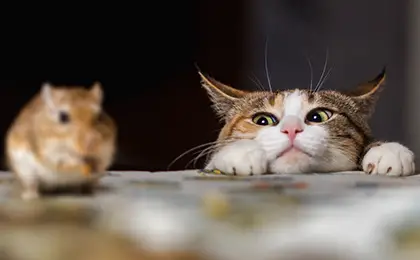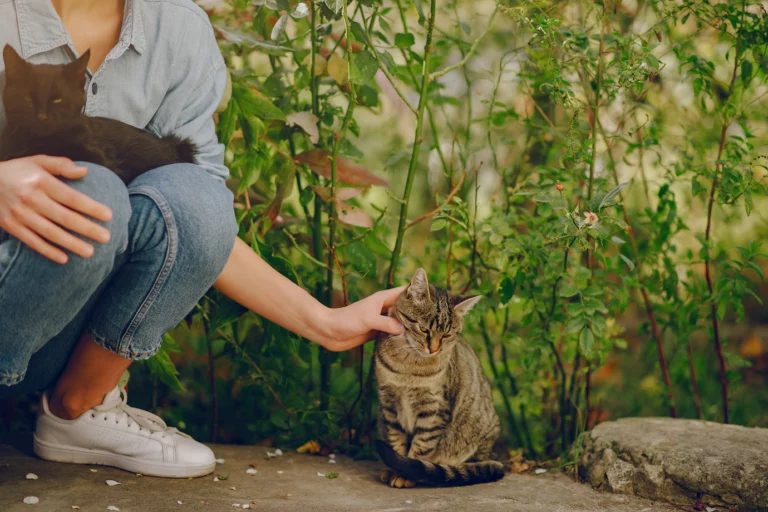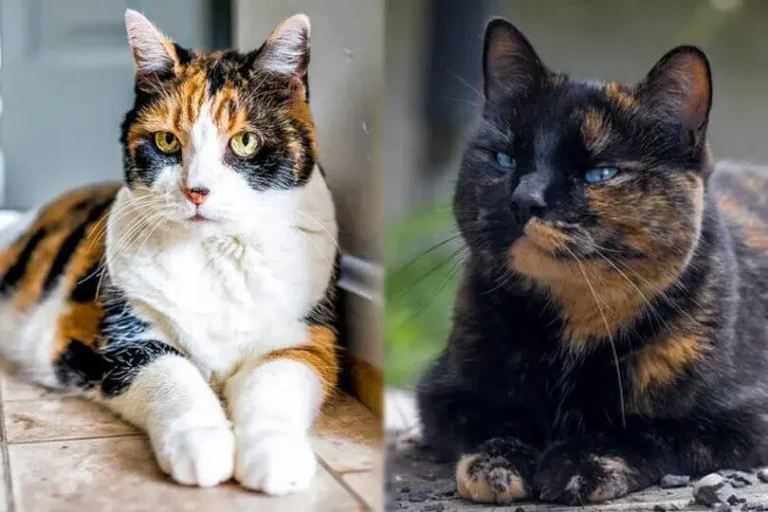Do Cats Have Knees, Elbows, Ankles or Wrists?
Ah, the ever-curious world of feline anatomy! Have you ever watched a cat gracefully leap onto a high perch and thought, “How do their joints work? Do cats have knees or ankles like us?” You’re not alone in this fascination.
Many cat owners, and even those without a feline friend, have pondered over the unique structure of cats and the capabilities it offers them.
In this deep dive, we’ll explore the intricacies of a cat’s anatomy, addressing questions like whether they have knees, elbows, ankles, or wrists. Prepare to embark on a fascinating journey into the world of feline anatomy!
Short Answer: In a nutshell, cats do indeed have knees, elbows, ankles, and wrists. These joints play crucial roles in their agility and flexibility. Specifically, a cat’s knees are located on their hind legs, elbows on their front legs, and they have both ankles and wrists known as the hock and carpus respectively. While their anatomy might differ from ours in some ways, it’s these very differences that grant our feline friends their renowned grace and dexterity.
Do Cats Have Knees, Elbows, Ankles or Wrists: An In-Depth Look at Feline Anatomy
Do Cats Have Knees?
Yes, cats absolutely have knees! The knee, scientifically referred to as the stifle joint, is located on the hind legs of cats. It connects the thigh bone (femur) to the shin bone (tibia) and plays a pivotal role when a cat jumps, runs, or simply walks.
This joint allows for significant bending and straightening, contributing to a cat’s agility and nimbleness.
Do Cats Have Kneecaps?
Cats do have kneecaps, known as the patella. The patella is a small bone embedded in the tendon of the extensor muscles (the big muscles in front of the thigh). It serves as a protection for the knee joint and provides leverage, improving the function of the muscles that straighten the leg.
Do Cats Have Elbows?
The answer is a resounding yes. The elbow in cats is the joint where the upper arm bone (humerus) meets the two bones of the forearm (radius and ulna). Located in their forelimbs, the elbow is crucial for activities that require reaching, stretching, or curling, like when they knead with their paws.
Do Cats Have Ankles?
When observing a cat, you’ll notice a joint midway up their hind leg – this is their ankle, technically referred to as the tarsus or hock. While it might seem to bend the opposite way to a human ankle, it’s an essential part of their anatomy, offering both stability and flexibility.
Do Cats Have Wrists?
Absolutely. The feline wrist, or carpus, is the joint connecting the bones of the forearm to the paw. It’s relatively high up on the leg, just below what might look like a cat’s “elbow”. This joint grants cats a lot of their paw dexterity, enabling precise movements, like when they’re playing with toys or capturing prey.
Do Cats Have Armpits?
Yes, cats have an armpit or “axilla”. It’s the space beneath where the forelimb connects to the body. While not a joint like the others mentioned, it’s worth noting as the area is rich in glands and is one of the few places cats can sweat from!
Do Cats Have Arms?
While we might casually refer to a cat’s front limbs as “arms”, scientifically they’re known as forelimbs. Unlike human arms, which are adapted for grabbing and manipulating objects, a cat’s forelimbs are primarily designed for support, walking, and capturing prey.
Do Cats Have 4 Legs?
From a terminological perspective, cats are described as having four legs. However, due to our anthropomorphic tendencies, it’s common to refer to the front legs as “arms”.
Biologically speaking, all four of a cat’s limbs are legs, and their anatomical structure is geared towards supporting their body weight and enabling their diverse range of movements.
No products found.
Comparative Anatomy: Cats vs. Humans
Similarities in Joint Structure
Both cats and humans have evolved with joint structures that allow for a variety of movements, catering to their individual lifestyles and needs. At the core, the basic principles of joint design remain similar:
- Hinge Joints: Like our knees and elbows, cats have joints that operate much like a hinge on a door, allowing for movement in one plane. This permits bending and straightening, which is essential for activities like walking and running.
- Ball and Socket Joints: Cats, like humans, possess these types of joints which offer a wide range of motion in many directions. In humans, the hip and shoulder are examples. For cats, it’s the equivalent of their shoulders.
- Gliding Joints: Found in areas where bones meet and need to slide over one another, such as in the wrists (or carpus, in cats) and our own ankles.
- Tendons and Ligaments: Both cats and humans rely on tendons (connecting muscle to bone) and ligaments (connecting bone to bone) to stabilize and facilitate joint movement.
Unique Features in Cats
Despite the similarities, there are aspects of feline anatomy that are particularly specialized:
- Flexibility: Cats are famously flexible. Their spines can rotate more than the spines of most other animals, and this flexibility extends into their limb joints. This suppleness is one reason they’re such agile hunters and climbers.
- Clavicle Differences: Unlike humans, a cat’s clavicle, or collarbone, doesn’t connect with other bones. Instead, it’s buried in the muscles of the shoulder region. This allows them to have a wider range of movement in their forelimbs and is one reason why they can squeeze through tight spaces.
- Digitigrade Stance: Cats walk on their toes (digitigrade) while humans walk flat-footed (plantigrade). This toe-walking gives cats a stealthy and agile edge, helping them move quietly while stalking prey.
- Ankle Positioning: While we mentioned the tarsus (or ankle) of cats earlier, it’s worth noting again how it seems to be “backward” compared to human ankles. This design aids in their jumping and sprinting capabilities.
By appreciating the similarities and differences between feline and human anatomy, we can gain a deeper understanding of the evolutionary choices that have shaped these two species, each perfectly adapted to its environment.
Medical Conditions Related to These Joints
No products found.
Joint Issues in Feline Forelimbs
Cats are adept climbers, jumpers, and hunters. These activities, combined with age or injury, can sometimes lead to joint issues in their forelimbs. Let’s delve into some of these concerns:
- Arthritis: Just as in humans, cats can develop osteoarthritis. This degenerative joint disease can affect the joints in the forelimbs, causing pain, swelling, and reduced mobility. A cat with arthritis might be reluctant to jump, play, or even walk. The condition is often a result of wear and tear over time, but it can also be due to injuries or genetic predispositions.
- Carpal Hyperextension: As suggested in the VCA Hospitals article, carpal hyperextension is an injury where the carpus (equivalent to the human wrist) is stretched beyond its normal range. This can result in partial or complete tearing of the ligaments. Symptoms include lameness, swelling, and pain. Cats at higher risks are those that experience trauma or fall from significant heights.
- Forelimb Lameness: Various factors can cause this, including sprains, fractures, or infections. Lameness is typically characterized by a change in the cat’s gait, reluctance to bear weight on the affected limb, or an unusual posture.
- Tendonitis: This is an inflammation of the tendons, which can be caused by overuse, trauma, or age. Cats with tendonitis may lick or bite the affected area and might show signs of pain when the area is touched.
Joint Issues in Feline Hindlimbs
The hindlimbs bear much of a cat’s weight and are crucial for their impressive jumping skills. But these same abilities can also predispose them to specific joint issues:
- Patellar Luxation: The patella, or kneecap, can sometimes dislocate from its usual position in some cats. This can be due to congenital abnormalities, trauma, or degenerative changes. Cats with this condition may occasionally hold the affected leg up for a few steps.
- Arthritis in the Knees and Ankles: Just as in the forelimbs, the joints in the hindlimbs can be affected by osteoarthritis, causing pain and reduced mobility.
- Sprains and Strains: Overstretching or tearing the ligaments or muscles in the hindlimbs can result in sprains or strains. This can occur if a cat lands awkwardly after a jump or if they overexert themselves.
- Achilles Tendon Injury: Located at the back of the hindlimb, this tendon can become injured or torn, especially in active cats or those who experience a traumatic event.
Understanding these conditions can help cat owners be more vigilant about their feline friends’ health, ensuring early detection and treatment for a comfortable and active life.
Importance of Joint Health in Cats
Cats are notorious for their agility, grace, and flexibility. From their playful leaps to their ability to perch on the highest shelf, joints play a pivotal role in their day-to-day life. As such, understanding and prioritizing joint health can make a world of difference in their overall quality of life.
Nutrition and Joint Health
Food is more than just fuel; it’s the foundation of health. Ensuring that a cat receives the proper nutrients is paramount for the maintenance of strong and functional joints.
- Omega-3 Fatty Acids: Often found in fish oils, omega-3 fatty acids have anti-inflammatory properties that can help reduce joint inflammation and pain, especially in arthritic cats.
- Glucosamine and Chondroitin: These are natural compounds found in healthy cartilage. They have been shown to help reduce the degradation of cartilage, which is particularly useful for cats with osteoarthritis. Many commercial cat foods and supplements now incorporate these compounds.
- Antioxidants: Vitamins such as C and E play a role in combating oxidative stress that can contribute to joint degeneration. They can be found in many fruits, vegetables, and certain high-quality cat foods.
- Proteins and Amino Acids: Essential for tissue repair and maintenance, high-quality proteins can support joint health by aiding in the repair of ligaments, tendons, and cartilage.
- Calcium and Phosphorus: These minerals are essential for bone health. A balanced intake can help ensure that bones, which form part of the joints, remain strong and resilient.
Exercise and Mobility
While cats might seem like the masters of relaxation, regular exercise is vital for their joint health.
- Maintaining Ideal Weight: Regular activity can help prevent obesity, a significant risk factor for joint problems in cats. Carrying excess weight can put undue strain on their joints, leading to early wear and tear.
- Strengthening Muscles: Exercise can help in building muscle mass, which supports and stabilizes joints. This can be particularly beneficial in preventing injuries.
- Improving Flexibility: Engaging in various movements during play or exploration can help in maintaining the range of motion in their joints. Toys, interactive play, or even simple stretches can aid in this.
- Enhancing Circulation: Physical activity boosts circulation, ensuring that nutrients reach the joints and waste products are efficiently removed.
- Mental Well-being: Exercise is not just about physical health. An active cat is often a happier one, as play and exploration cater to their natural instincts and keep them mentally stimulated.
In conclusion, joint health plays a fundamental role in a cat’s well-being. Proper nutrition and regular exercise can go a long way in ensuring our feline companions move with ease and comfort throughout their lives.
Evolutionary Perspective: Significance of These Joints
Cats, revered and recognized for their exceptional agility, stealth, and predatory prowess, have evolved over millions of years into the skilled hunters and domestic companions we know today.
Central to these abilities is their unique skeletal structure, especially their joints. But what evolutionary advantages did these joints confer, and how did they help shape the success of the Felidae family?
Survival of the Fittest: A Predatory Lineage
The ancestors of modern cats branched out into various habitats, each demanding specific sets of skills. Whether it’s the forest-dwelling bobcat or the desert-stalking cheetah, the joint structures of cats have evolved to optimize their hunting strategies.
- Knees and Ankles: Cats’ knee and ankle joints have allowed for a wide range of motion. This flexibility, combined with powerful leg muscles, has given many cat species the explosive power to sprint at high speeds over short distances. The sharp, retractable claws further enhance the grip, allowing for rapid changes in direction while chasing prey.
- Elbows and Wrists: The elbows and wrists in cats are designed for precision and strength. These joints allow them to stealthily stalk and pounce on their prey. Once caught, the strong grip of their front paws, aided by their joint flexibility, helps secure and subdue their catch.
Climbing and Territoriality
Apart from hunting on the ground, many feline species have evolved to be adept climbers, thanks to their joint structures.
- Wrists and Forelimbs: A cat’s ability to rotate its wrists permits it to climb trees head-first and even descend in a similar manner, a crucial skill for both hunting and escaping predators. This wrist flexibility also enables cats to maintain a grip on tree branches or any other vertical surfaces.
- Ankles and Hindlimbs: The ankle joints provide stability and balance, especially when a cat is perched high. Their evolutionary design allows cats to push off and leap from heights, making them effective ambush predators.
Rest and Relaxation
A lesser-known fact is that cats are crepuscular, most active during dawn and dusk. The comfort and flexibility of their joints play a crucial role in their rest cycles.
- Armpits and Body Flexibility: Cats have a unique “armpit” region that contributes to their body’s overall flexibility. This has evolved to aid them in stretching, twisting, and curling up into tight spaces, helping them find safe and cozy spots to rest and conserve energy for their next hunt.
In essence, the joint structures in cats are not mere biological coincidences. They are the result of millions of years of evolutionary pressures that have honed and refined their anatomy, making them one of nature’s most formidable and elegant predators.
Whether it’s the sprint of the cheetah, the leap of the caracal, or the graceful landing of a domestic cat from a high shelf, it’s clear that every joint plays a vital role in the feline success story.
Debunking Myths Surrounding Cat Anatomy
The mysterious and often enigmatic nature of cats has given rise to countless myths, legends, and misconceptions. From their supposed nine lives to the belief in their supernatural connections, cats have long been subjects of human fascination.
And this intrigue extends to their anatomy as well. Here, we’ll tackle and debunk some of the common myths surrounding feline joints and bones.
Myth 1: Cats Have “Backward” Knees
This is a commonly held belief, but it’s a misunderstanding of feline anatomy. What many people interpret as a backward knee is actually a cat’s ankle or hock joint. Cats, like humans, have knees that face forward.
The confusion arises because of the elongated look of a cat’s legs, which gives the appearance of an additional joint bending the wrong way.
Myth 2: Cats are “Boneless” Creatures
The way cats squeeze into tight spaces, stretch, and contort their bodies gives an impression of them being “boneless”. Of course, this isn’t true. Cats have a skeletal structure like any other mammal.
Their apparent flexibility is due to their more vertebrae, particularly in their backbone, compared to humans. This, combined with their unique joint structure, grants them an extraordinary range of motion.
Myth 3: All Cats are Polydactyl
While it’s true that some cats have extra toes (polydactylism), this is not the norm for all cats. This genetic mutation is more common in certain geographical areas and breeds, but it’s by no means a standard feature of feline anatomy.
Myth 4: Cats Don’t Suffer from Arthritis
Given how agile and graceful most cats appear, there’s a misconception that they don’t suffer from joint issues like arthritis. This is far from the truth. Like any other creature with bones and joints, cats can and do develop arthritis, especially as they age.
In fact, because cats are masters at hiding pain, many cases of feline arthritis go unnoticed.
Myth 5: Cats’ Claws are Part of Their Bone Structure
While it might seem this way, especially when observing a cat’s retractable claws in action, their claws are not extensions of their bones. Instead, they are keratinous structures that grow from the outer edges of the toes, much like human nails.
In the world of feline aficionados, separating fact from fiction can be a challenge. But as with many subjects, a deeper understanding of the topic, in this case, cat anatomy, can lead to a greater appreciation of these magnificent creatures and their unique adaptations.
Frequently Asked Questions
Do cats have 4 legs or 2 legs and 2 arms?
Cats have four legs. While the front limbs can perform many functions, such as grabbing or holding things similarly to arms, anatomically they are considered legs.
Do kittens have elbows?
Yes, kittens, just like adult cats, have elbows. The elbows are located on the front legs and allow for bending and flexion.
What are cats’ knees called?
Cats’ knees are referred to simply as “knees” or the stifle joint. The stifle joint is analogous to the human knee.
Do cats have a ball and socket?
Yes, cats have ball and socket joints, most notably in their hip region. This joint type allows for a wide range of motion.
What is a cat’s knee called?
A cat’s knee is called the stifle joint. It is functionally equivalent to a human’s knee.
Do cats have backward knees?
No, cats do not have backward knees. What many perceive as “backward knees” on a cat’s hind legs are actually their ankles or hocks. Cats’ knees are positioned higher on the leg and face forward.
Do cats have knees and ankles?
Yes, cats have both knees and ankles. The knees are located higher up on their hind legs, while the ankles (or hocks) are lower down, giving the appearance of an additional joint.
Do cats have 2 arms and 2 legs?
Anatomically, cats have four legs. While the front legs can serve functions similar to arms, they are still considered legs in terms of anatomy.
How do cats’ joints develop as they age?
As cats age, just like in humans, their joints may undergo wear and tear. This can lead to conditions like arthritis. Proper nutrition, exercise, and regular vet check-ups can help in maintaining joint health.
Do certain cat breeds have different joint structures?
While the basic skeletal and joint structure remains consistent across all cats, certain breeds might have distinct characteristics due to selective breeding. For instance, breeds like the Manx, which might lack a tail, can have a different vertebral structure. Always consult a veterinarian for breed-specific information.
No products found.
Conclusion
The intricate anatomy of our feline friends is truly a marvel of nature. From their agile joints to their unique limb structures, cats are built for both grace and efficiency.
While they may have four legs, each joint, be it the knee, elbow, ankle, or wrist, plays a crucial role in their everyday activities, from pouncing on toys to climbing their favorite perches.
By understanding their anatomy, we can better cater to their needs, ensuring they lead a healthy, mobile, and active life. The next time you observe your cat stretching or leaping, take a moment to appreciate the complex biomechanics at play.
And remember, while they might not have arms or backward knees, every part of a cat’s body is perfectly tailored for its feline lifestyle.
Additional Resources
For those eager to delve deeper into feline anatomy and care, the following resources provide valuable insights and information:
- Books on Feline Anatomy:
- “The Anatomy of the Domestic Cat” by S. Popesko, V. Rajtová, and J. Horák.
- “Clinical Anatomy of the Cat” by M. K. Shively.
- Websites:
- The Cornell Feline Health Center: An invaluable resource for cat owners, offering in-depth articles on cat health, anatomy, and care.
- International Cat Care: A wealth of information on cat health, behavior, and welfare.
- Online Courses:
- Cat Anatomy and Physiology Course: A comprehensive course for those interested in a more academic understanding of feline anatomy.
- Mobile Apps:
- Cat Care: This app provides a visual guide to feline anatomy and common health issues.
- Feline 3D: An interactive 3D tool that lets users explore the anatomy of cats in detail.
- Organizations:
- The American Association of Feline Practitioners (AAFP): Offers various resources and publications on feline health and care.
Exploring these resources will deepen your understanding of your cat’s physical structure and help you provide the best care possible for your feline friend.

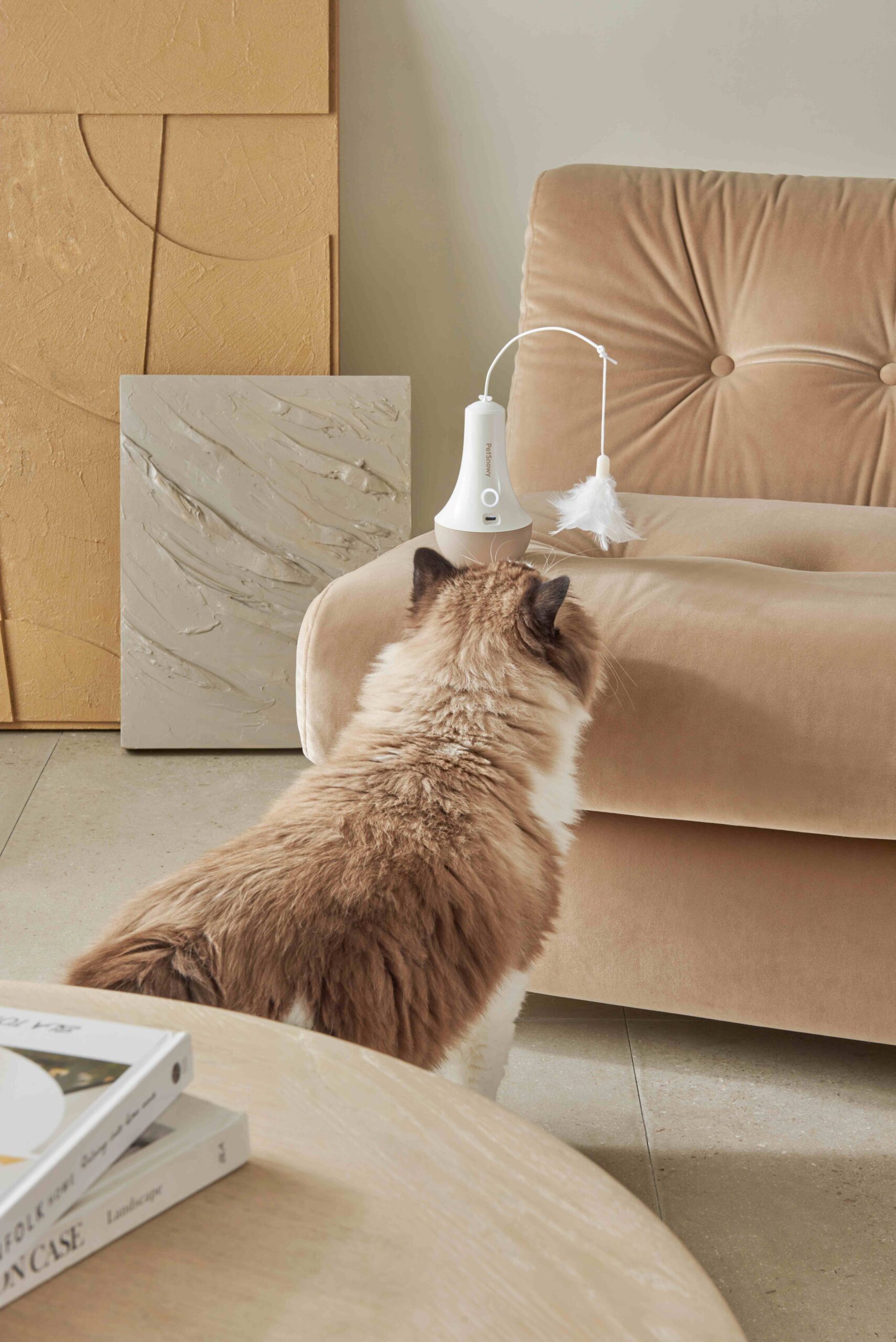
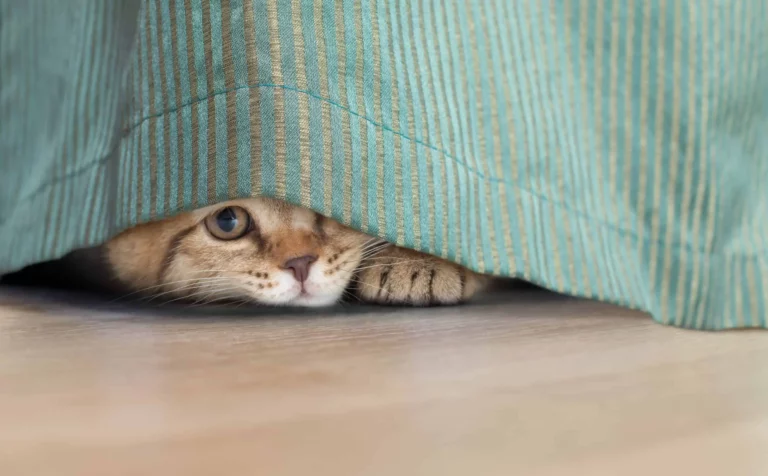
![Why Does My Cat Like To Smell My Breath? [4 Reasons]](https://www.warmlypet.com/wp-content/uploads/2023/01/Why-Does-My-Cat-Like-To-Smell-My-Breath.webp)

